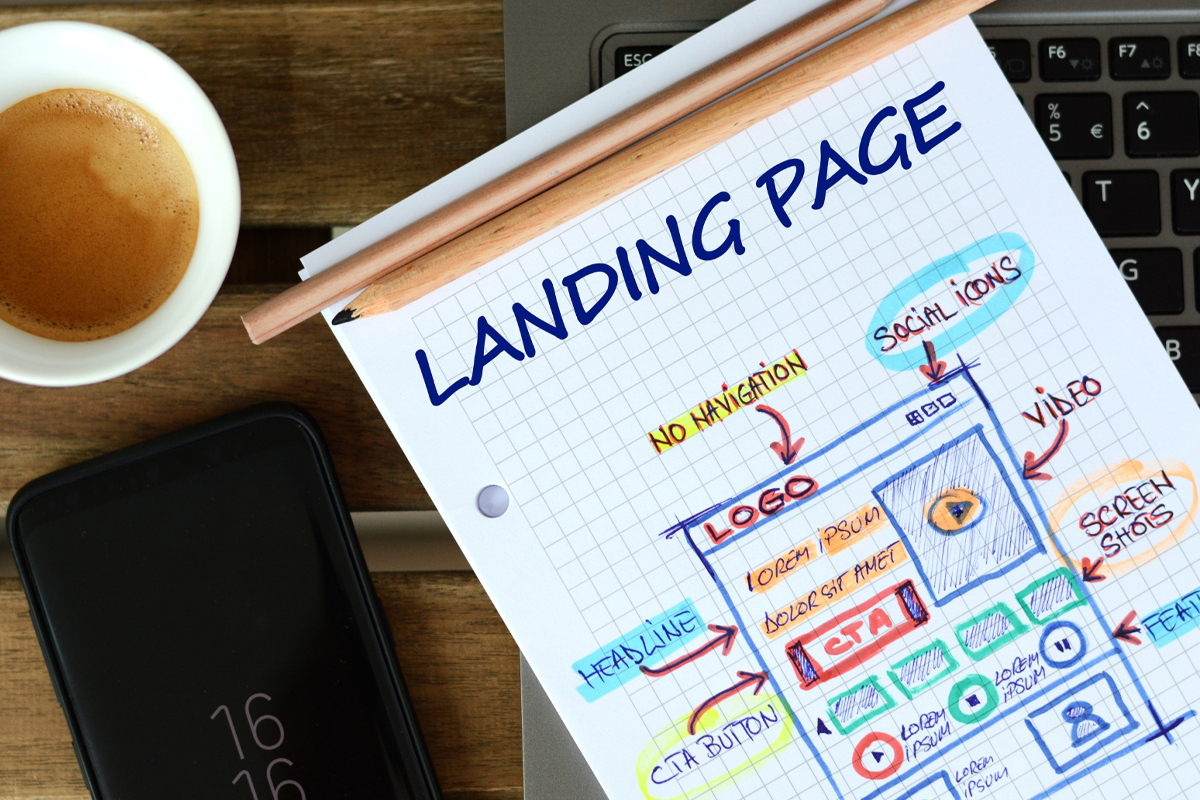
How Law Firms Can Turn Clicks into Consultations
For law firms running SEO, Google Ads, or paid social campaigns, the landing page is where your marketing either works — or falls apart. You can have strong ad copy, the right keywords, and a solid budget, but if your landing page doesn’t convert, the leads never come.
Legal prospects are different. They’re often anxious, under pressure, and looking for answers fast. That means your landing page must do more than just explain your services — it needs to establish trust, remove friction, and make the next step easy.
Here’s how to structure a landing page that consistently turns legal traffic into qualified leads.
What Makes a Legal Landing Page Convert?
Legal landing pages are unique because:
- The stakes are high (divorce, custody, criminal charges, business disputes)
- Prospects are emotional and time-sensitive
- Trust is essential — fast
- Every second counts (especially on mobile)
Your page needs to guide users through an experience that builds confidence and urgency without overwhelming them with legal jargon or excessive detail.
The Ideal Structure for a High-Converting Legal Landing Page
1. Headline That Matches Intent
Your headline should reflect what the user searched for — clearly and directly.
Examples:
- “Speak with a Tampa Divorce Attorney Today”
- “Florida Criminal Defense You Can Count On”
- “Schedule a Free Consultation with an Injury Lawyer Near You”
Avoid vague headlines. The user should immediately know they’re in the right place.
2. Subheadline That Reinforces Trust
Use a short sentence under the headline to support your message with a credibility hook.
Examples:
- “20+ Years of Experience. 1,000+ Successful Cases.”
- “Responsive. Confidential. Focused on Results.”
- “Top-Rated Legal Team Serving Central Florida”
This is your first opportunity to build confidence. Keep it clear and benefit-focused.
3. High-Impact CTA Above the Fold
Place a call-to-action button or short lead form at the top of the page — visible without scrolling.
Best Practices:
- Use contrasting colors for buttons
- Use action-driven language: “Schedule My Consultation,” “Request Legal Help Now”
- Include a tap-to-call option for mobile users
Minimize friction by only asking for what’s essential (name, phone, brief message or case type).
4. Quick Benefits or Case Types Section
Use a 3–5 bullet list or icon row to communicate:
- What you handle (e.g., child custody, DUI defense, slip and fall injuries)
- Key differentiators (free consultations, 24/7 availability, trial experience)
- Outcomes you’ve helped clients achieve
Keep it skimmable — this section reassures visitors they’re in the right place.
5. Trust Signals and Proof Elements
Legal prospects need to feel safe. Include:
- Client testimonials or review snippets
- Trust badges (Avvo, Super Lawyers, BBB, Google reviews)
- Bar association memberships or media mentions
Social proof near CTAs can dramatically increase conversions — especially when placed strategically around the form.
6. Brief Attorney or Firm Overview
Introduce yourself or your firm in 2–3 short paragraphs. Focus on:
- Location and areas served
- Your experience or reputation
- Case types you focus on
This is not your About page — it’s a credibility section that supports the lead generation goal.
7. Expanded CTA with Supporting Copy
As the user scrolls, give them a second opportunity to convert with a slightly larger CTA section. Reinforce:
- What they get next (“We’ll respond within 1 business day”)
- What to expect in a consultation
- Confidentiality or urgency (“We handle time-sensitive cases”)
8. FAQ or Reassurance Section
Address 3–5 common concerns:
- “How much does a consultation cost?”
- “Do I need a lawyer for this?”
- “What happens after I submit this form?”
This reduces hesitation and can reduce bounce rate for colder traffic.
9. Final CTA (Sticky or Footer-Based)
Don’t make users scroll back up. Add a final call to action at the bottom with:
- A short form or contact button
- Your phone number
- Live chat (if available)
You can also use a sticky bar CTA that follows users on mobile, like “Call Now” or “Request Help.”
Technical Considerations for Legal Landing Pages
| Element | Recommendation |
|---|---|
| Page Speed | Under 3 seconds on mobile |
| Mobile UX | Large buttons, click-to-call, short scroll depth |
| HTTPS & Privacy | Secure forms, clear privacy messaging |
| Form Tracking | Use conversion tracking for form fills and calls |
| SEO Considerations | Unique title tag, schema markup, NAP consistency |
If your legal marketing is bringing in traffic but not converting leads, the issue may not be your ads — it may be your landing page.
A strong legal landing page doesn’t just inform — it convinces. It shows that you understand the urgency and seriousness of your client’s situation, and it gives them a fast, frictionless path to getting the help they need.
Want help building high-converting legal landing pages that support your SEO and PPC efforts?
We help law firms across Florida turn paid traffic into real cases through proven page structures, messaging strategies, and conversion rate optimization. Let’s improve your lead flow — one page at a time.

